Track fresh paw prints in pristine snow to discover where foxes, deer, and rabbits venture during their winter wanderings. Bundle up at dawn or dusk when wildlife activity peaks, positioning yourself downwind near feeding areas and natural corridors. Witness the winter magic in Ontario parks as chickadees gather at feeders, white-tailed deer browse on cedar tips, and snowy owls perch on bare branches scanning for prey. Nature’s most enchanting stories unfold in winter’s quiet moments, when survival instincts drive fascinating behaviors rarely seen in warmer seasons. From the distinctive waddle of porcupines through deep snow to the graceful glide of river otters down icy banks, winter transforms our forests and fields into living storybooks of animal adaptation. Learn to read these stories written in tracks, trails, and telltale signs left behind by our hardy winter residents.
Common Winter Wildlife You’ll Find in Ontario Parks
Mammals That Don’t Hibernate
While many animals hunker down for winter, Ontario’s forests and fields remain alive with activity from our hardy year-round residents. White-tailed deer are among the most visible winter mammals, often gathering in groups to browse on twigs and bark. Their thick winter coats and ability to lower their metabolism help them survive even the coldest days.
Red foxes stay particularly active during winter months, their stunning rust-colored coats standing out brilliantly against the snow. These clever creatures actually hunt more efficiently in winter, using their keen hearing to detect prey moving beneath the snow. You might spot their distinctive tracks, showing a straight-line pattern that’s unique among Ontario’s wildlife.
Wolves and coyotes remain busy throughout the winter, often becoming more visible as they travel in packs across open areas. Their thick fur and efficient hunting strategies make them well-adapted to winter conditions. Listen for their haunting howls, which carry particularly well through the crisp winter air.
Other active winter mammals include river otters, who seem to embrace the cold weather by sliding playfully on snow and ice between fishing expeditions. Pine martens and fishers stay busy in the treetops, while snowshoe hares, easily identified by their white winter coats, remain active but well-camouflaged.
Keep an eye out for these resilient creatures during your winter walks, especially during dawn and dusk when many are most active.

Winter Birds
While many birds migrate south for the winter, Ontario’s winter landscape comes alive with both hardy year-round residents and seasonal visitors from the far north. Blue jays add vibrant splashes of color against the snow, while black-capped chickadees charm visitors with their cheerful calls and acrobatic feeding displays. These small but mighty birds can survive temperatures as low as -40°C thanks to their remarkable ability to lower their body temperature at night to conserve energy.
Winter brings special guests from the Arctic, like snow buntings and snowy owls, which treat wildlife enthusiasts to rare viewing opportunities. Keep an eye out for northern cardinals, whose brilliant red feathers stand out dramatically against winter’s white backdrop. You might also spot dark-eyed juncos and American tree sparrows foraging for seeds in snow-covered fields.
One of my favorite winter birding experiences is watching evening grosbeaks and pine grosbeaks gathering at feeders. These colorful finches often travel in flocks, creating quite a spectacle when they descend on berry-laden trees or well-stocked bird feeding stations.
Pro tip: Early morning is the best time to spot winter birds as they’re most active while searching for food. Consider setting up a feeding station near your viewing area, but remember to maintain it regularly throughout the season. Many birds come to depend on these food sources during the harsh winter months.
How to Read Animal Tracks Like a Pro
Basic Track Patterns
When you spot tracks in the snow, they tell fascinating stories about the wildlife that left them behind. The most common pattern you’ll see is the diagonal walker track, where animals place their back feet in the prints of their front feet – deer and foxes are masters of this energy-saving technique.
Bounders and hoppers leave distinctive groupings of prints. Weasels and mink create a two-by-two pattern, while rabbits and squirrels leave behind a larger set of back footprints followed by smaller front prints, forming what looks like an exclamation mark in the snow.
Some of the most interesting patterns come from the walkers and waddlers. Raccoons leave behind what looks like tiny handprints, while bears (during late fall or early spring) create large, human-like tracks but with visible claw marks. Porcupines drag their tails, leaving a distinctive line between their footprints.
One of my favorite patterns to spot is the perfect-stepper track of the lynx, where each paw lands exactly where the previous one lifted – a testament to their incredible efficiency in deep snow. Meanwhile, wild turkeys leave behind a distinctive three-toed pattern that looks like arrowheads pointing in their direction of travel.
Look for these patterns early in the morning when tracks are fresh and undisturbed by the day’s activities. Clear, crisp days after a fresh snowfall offer the best tracking conditions.
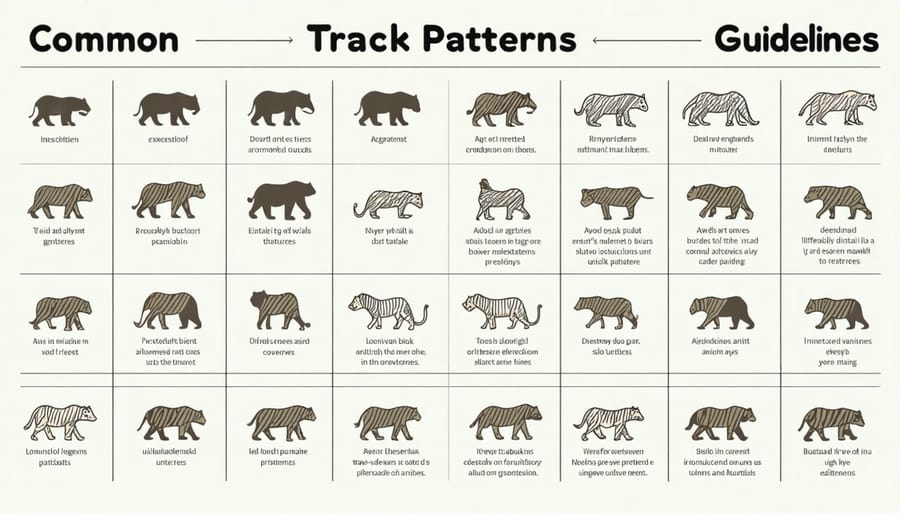
Track Identification Features
When you come across tracks in the snow, look for these key details to help identify which animal left them behind. First, count the number of toes – deer tracks show two distinct hoofprints, while coyotes and foxes typically leave four-toed prints with claw marks. Rabbits leave distinctive paired tracks, with their larger back feet landing ahead of their smaller front paws.
Size matters too! Measure both the length and width of the prints – a raccoon’s track is about 5-7 cm long, while a wolf’s print can be 9-12 cm. The spacing and pattern between tracks also tell a story. Animals like squirrels hop, creating a four-print cluster, while deer walk in a straight line with evenly spaced steps.
Look for drag marks between prints – these might be tail marks from animals like beavers or muskrats. Sometimes you’ll spot wing marks in the snow where birds have landed or taken off. Fresh tracks will have crisp, clean edges, while older ones appear more rounded from sun and wind exposure.
Pro tip: Take a photo of tracks with something familiar (like a coin or your glove) placed beside them for size reference. This helps with later identification and makes for great nature journaling! Remember that tracks often look larger in thawing conditions, so consider the weather when making your observations.
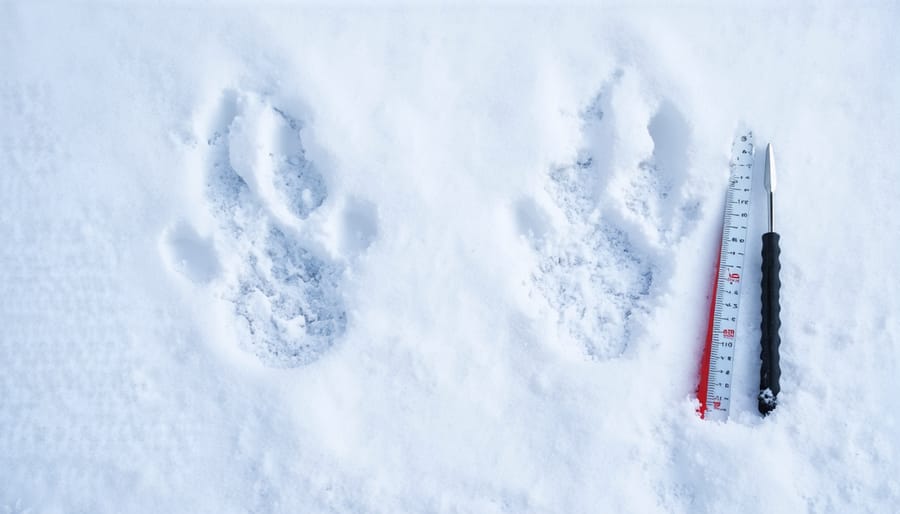
Snow Conditions and Tracking
Snow conditions play a crucial role in your wildlife tracking success, and understanding how different types of snow affect tracking can make your winter wildlife experience much more rewarding. Fresh powder snow is ideal for tracking, as it creates clear, crisp impressions that can last for days when temperatures remain below freezing. These pristine conditions are common after overnight snowfalls, making early morning the perfect time to spot fresh tracks.
Wet, heavy snow can also be excellent for tracking, creating detailed impressions that show even the tiniest features of an animal’s paw or hoof. However, these tracks tend to deteriorate quickly as seasonal weather conditions change and temperatures fluctuate.
Crusty or wind-packed snow presents more challenges, as tracks might not leave clear impressions. In these conditions, look for other signs like broken twigs, disturbed snow patterns, or animal droppings. During freeze-thaw cycles, morning tracking can be particularly productive as nighttime animal activity is preserved in the frozen snow.
Pro tip: Before heading out, check the weather forecast for the past 24-48 hours. The best tracking conditions typically occur 6-24 hours after a fresh snowfall, giving animals time to move about while ensuring tracks remain visible and undisturbed by subsequent weather changes.
Best Ontario Parks for Winter Wildlife Tracking
Southern Ontario Hotspots
Southern Ontario offers several prime locations for winter wildlife tracking, with the Niagara Escarpment and Oak Ridges Moraine providing excellent opportunities to spot animal activities. Kortright Centre for Conservation in Vaughan is particularly notable for its well-marked trails and frequent sightings of white-tailed deer, red foxes, and various winter bird species.
Rouge National Urban Park, straddling Toronto and the GTA, offers diverse habitats where visitors can discover tracks from coyotes, rabbits, and wild turkeys. The park’s extensive trail system makes it accessible even for beginners, while its interpretive programs provide valuable guidance for wildlife enthusiasts.
Don’t overlook the Dundas Valley Conservation Area near Hamilton, where the forested valleys create natural corridors for wildlife movement. Here, you might spot tracks from white-tailed deer, raccoons, and even the occasional fisher. The area’s varied terrain provides different tracking conditions, from open meadows to dense woodland.
Crawford Lake Conservation Area offers another fantastic tracking destination, with its elevated boardwalk providing a unique vantage point for spotting animal signs without disturbing the natural environment. Winter weekends often feature guided tracking programs, making it an ideal spot for families and newcomers to wildlife observation.
Remember to visit these locations early morning or late afternoon when wildlife is most active, and always maintain a respectful distance from any animals you encounter.
Northern Ontario Adventures
Northern Ontario’s vast wilderness offers some of the most exceptional wildlife tracking opportunities you’ll find anywhere in the province. The remote regions around Thunder Bay, Timmins, and Sudbury transform into pristine winter wonderlands where animal tracks tell fascinating stories in the snow.
In places like Lake Superior Provincial Park, you can join guided tracking expeditions to spot elusive creatures like Canada lynx and woodland caribou. The park’s untouched wilderness provides perfect conditions for following animal trails, with experienced guides teaching you how to identify different track patterns and animal behaviors.
The Chapleau Crown Game Preserve, the world’s largest game preserve, becomes a tracker’s paradise in winter. Here, you might discover the distinctive prints of pine martens, follow wolf pack trails, or spot the unique walking patterns of snowshoe hares. The preserve’s 700,000 hectares of protected land ensure minimal human interference, making wildlife encounters more likely.
For a truly remote experience, head to Woodland Caribou Provincial Park, where winter camping adventures let you immerse yourself in the wilderness. The park’s isolation means you might spot rarely seen species like wolverines or arctic fox. Remember to bring high-quality binoculars and a camera with a zoom lens – the crisp winter air offers exceptional visibility for wildlife photography.
Local tip: Book a stay at one of the wilderness lodges near these locations. The staff often know the best spots for wildlife viewing and can share invaluable tracking advice.
Essential Tips for Winter Wildlife Tracking
What to Bring
To make the most of your winter wildlife experience, pack essential gear that keeps you comfortable and prepared. Start with warm, layered clothing including thermal underwear, a waterproof winter coat, insulated pants, and sturdy winter boots. Don’t forget a warm hat, scarf, and waterproof gloves – you might be standing still for extended periods while observing animals.
Bring a good pair of binoculars for distant viewing and a camera with extra batteries (cold weather drains them quickly). A small notebook and pencil are handy for recording your observations and sketching tracks. Pack a thermos of hot beverages and high-energy snacks to keep you fueled.
For tracking, bring a small ruler or measuring tape to document animal prints, and consider carrying a pocket guide to animal tracks. A basic first-aid kit and emergency supplies should always be in your backpack, along with a fully charged cell phone.
Pro tip: Pack hand and foot warmers – they’re lifesavers during long observation sessions. And don’t forget to bring reusable water bottles and eco-friendly bags for any trash, helping us keep our parks pristine for both wildlife and future visitors.
Safety First
While tracking wildlife in winter can be thrilling, it’s crucial to prioritize safety for both yourself and the animals. Always check the latest wildlife safety guidelines before heading out, and never venture into the wilderness alone. Pack essential winter gear, including extra layers, emergency supplies, and a fully charged phone. Keep a safe distance from all wildlife – remember, even seemingly docile animals can become defensive if they feel threatened.
Always tell someone your planned route and expected return time. Winter conditions can change rapidly, so check weather forecasts and trail conditions before departing. Carry a map and compass, as snow can obscure trail markers. If you encounter large animals like moose or bears (yes, they sometimes wake up during winter thaws!), remain calm and slowly back away while facing the animal.
Respect wildlife by observing from a distance and never feeding them, as this can alter their natural behaviors and survival instincts. Stick to designated trails to avoid disturbing winter dens and nesting sites. This way, we can all enjoy Ontario’s winter wildlife while keeping both ourselves and our furry friends safe.
Winter wildlife tracking offers a unique window into the secret lives of Ontario’s remarkable creatures. Each set of tracks tells a story, waiting to be discovered by those willing to venture out into the snowy wilderness. By practicing responsible wildlife observation – maintaining safe distances, avoiding disturbance, and leaving no trace – we help preserve these precious encounters for future generations. Whether you’re an experienced naturalist or a curious beginner, the rewards of winter wildlife watching are boundless: the thrill of discovery, deeper connection with nature, and memories that will last a lifetime. So bundle up, grab your camera, and head outdoors – Ontario’s winter wildlife is waiting to share its stories with you.

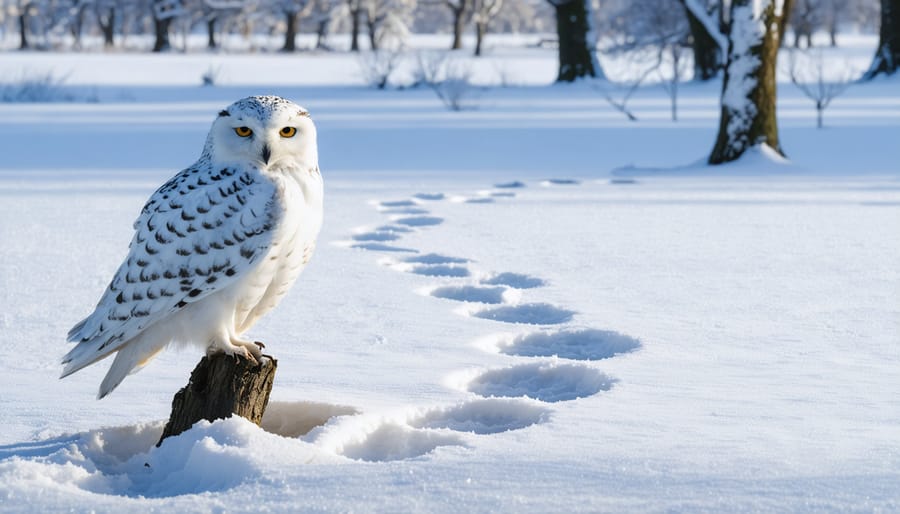




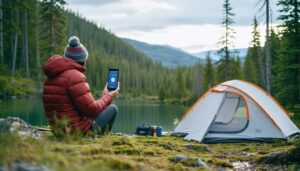
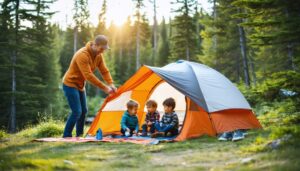

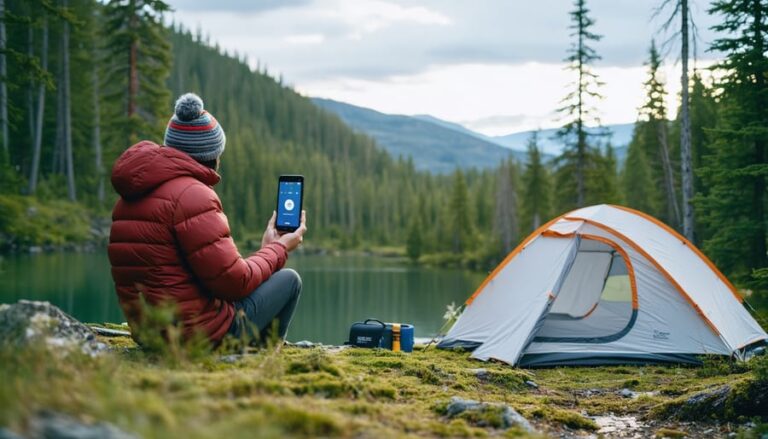
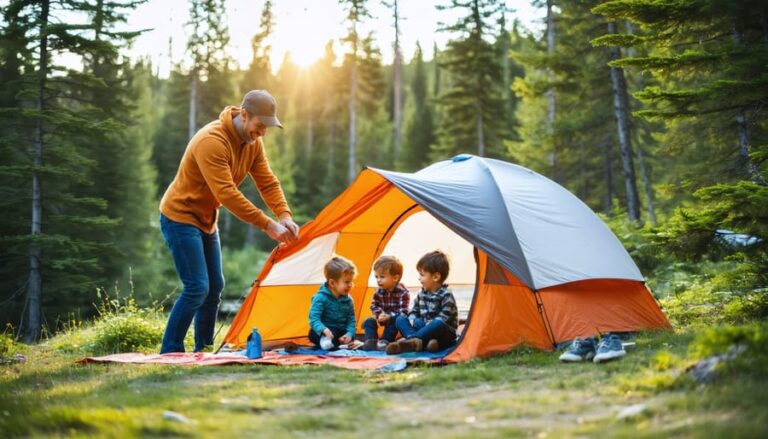
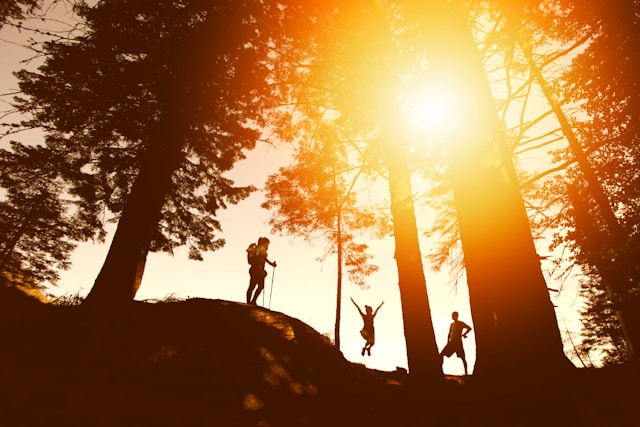
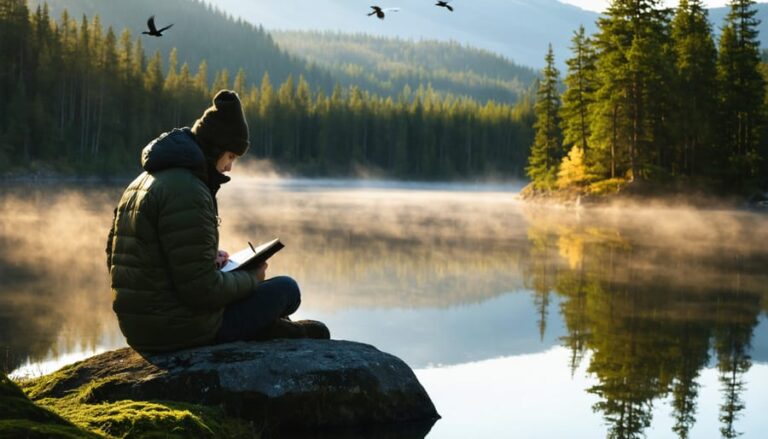
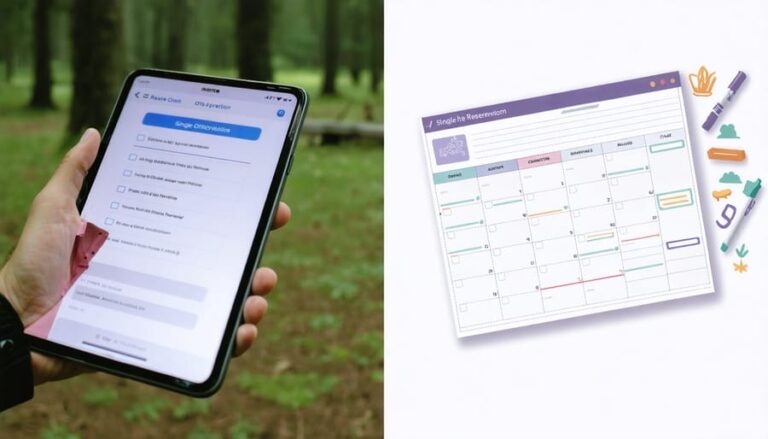
+ There are no comments
Add yours